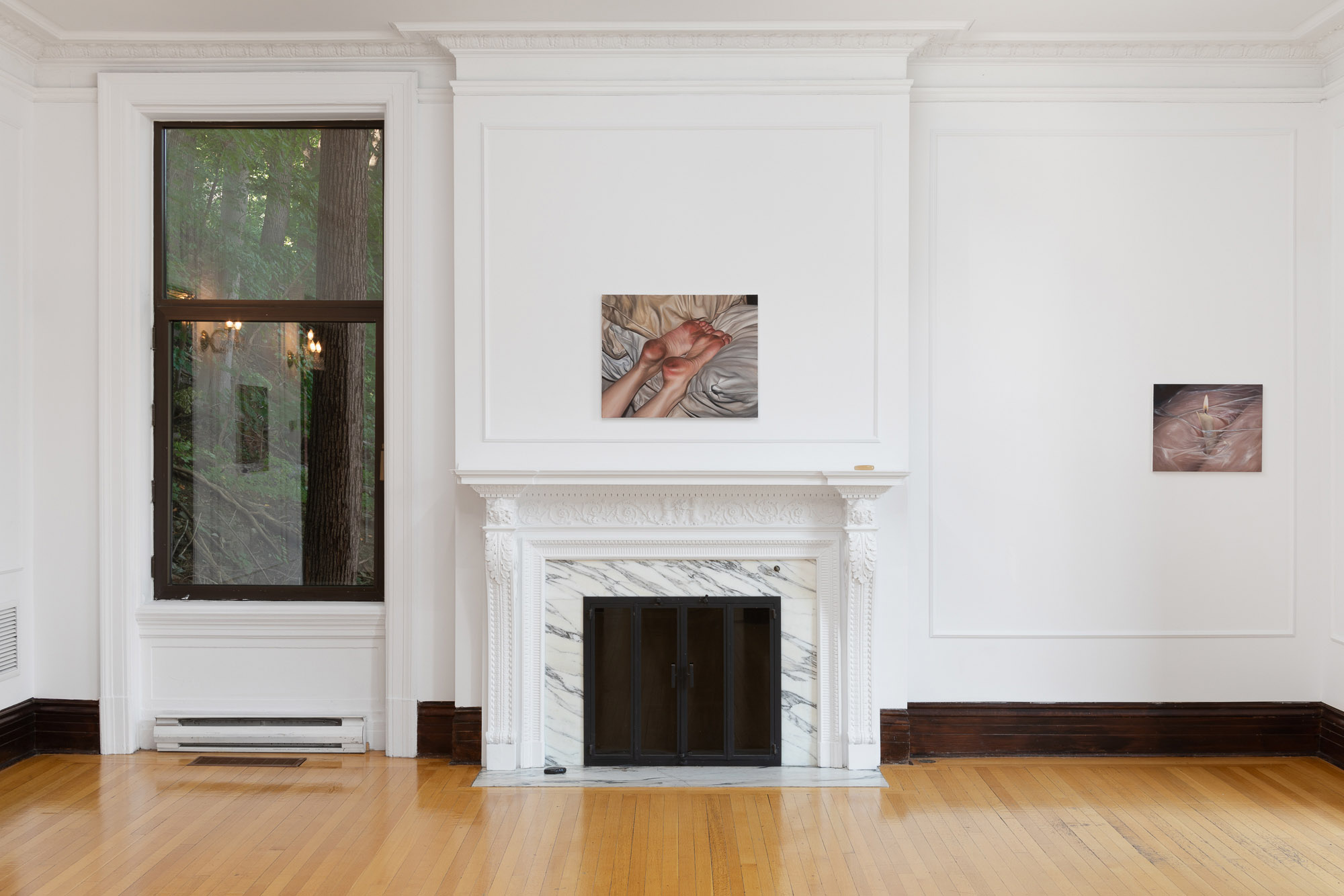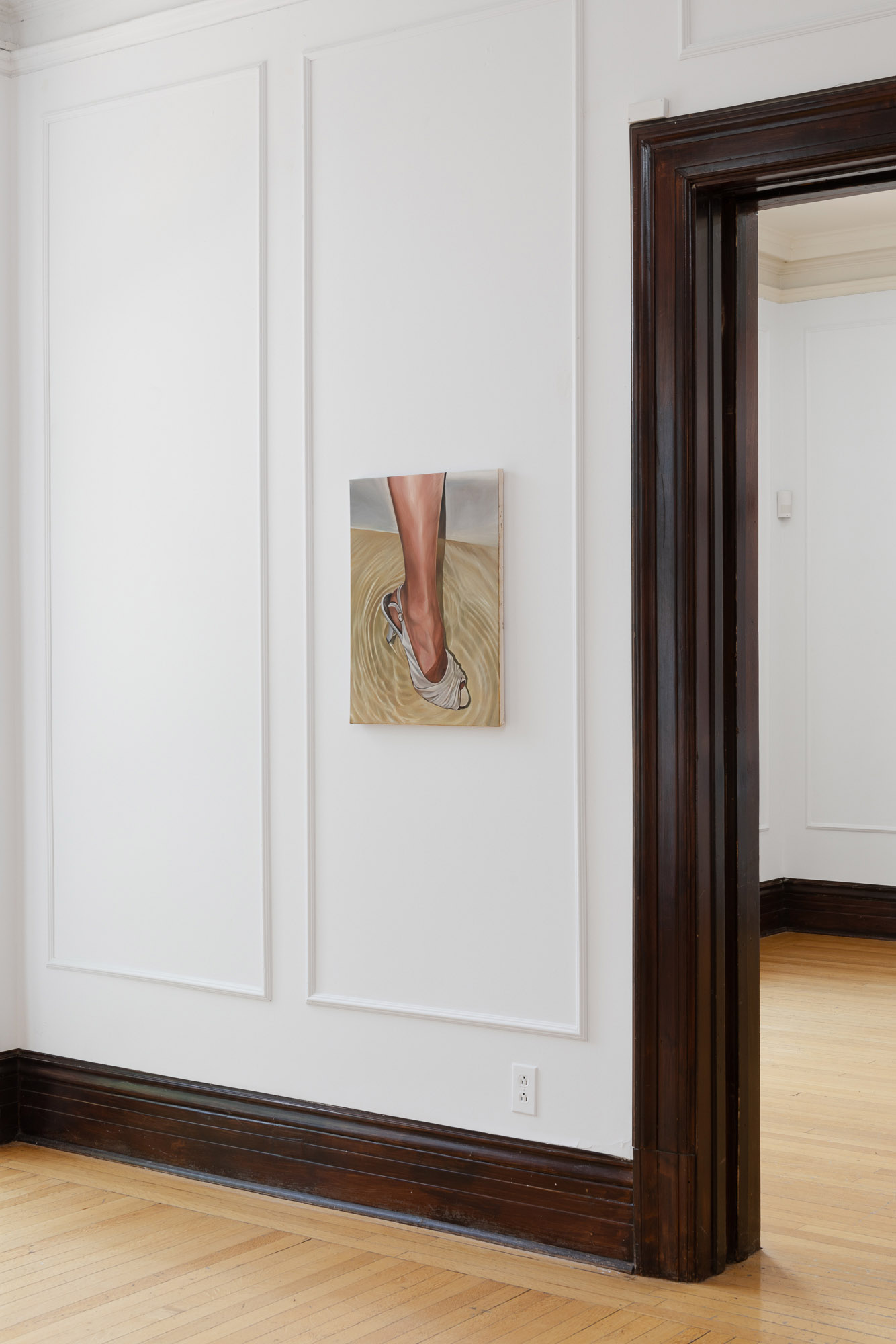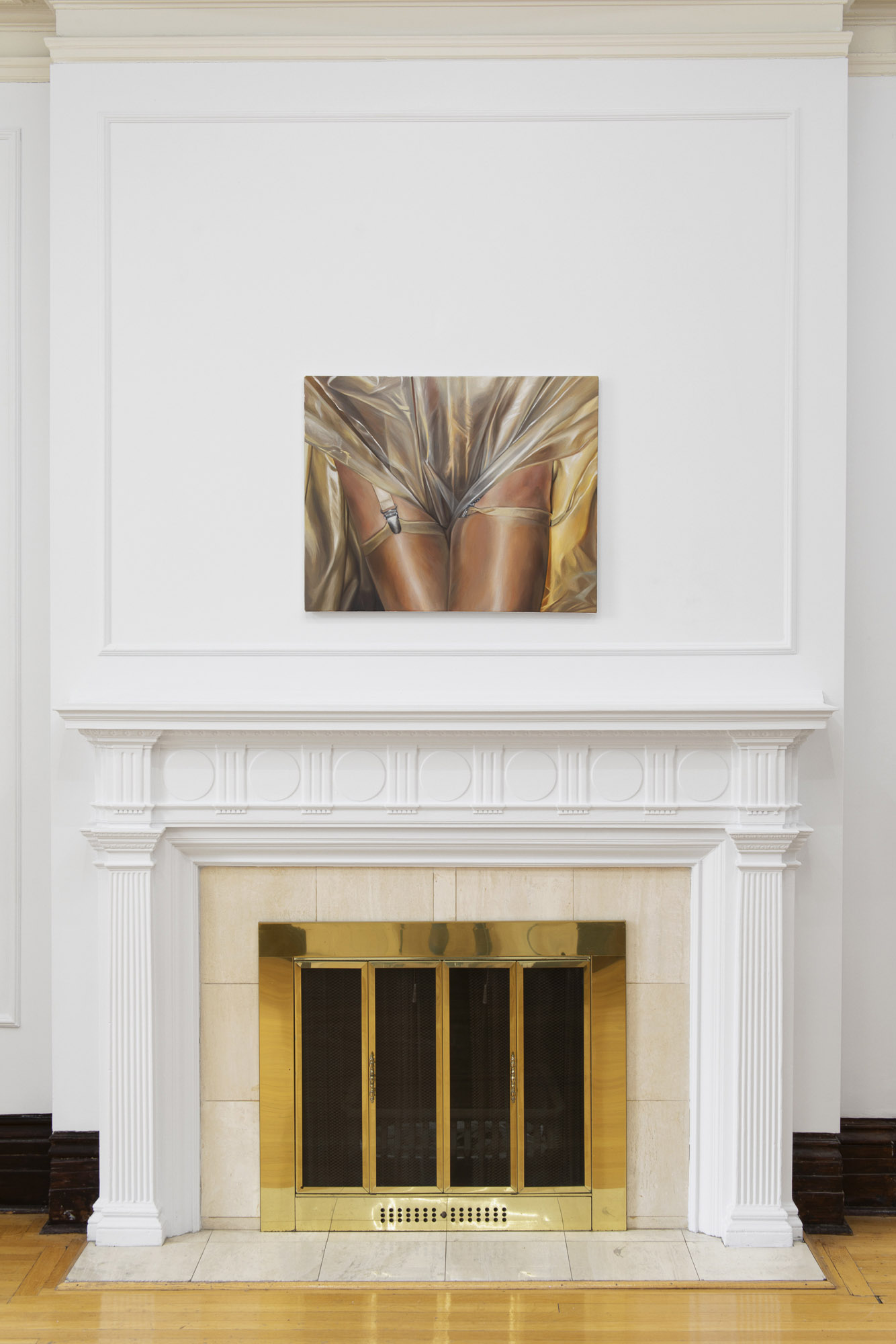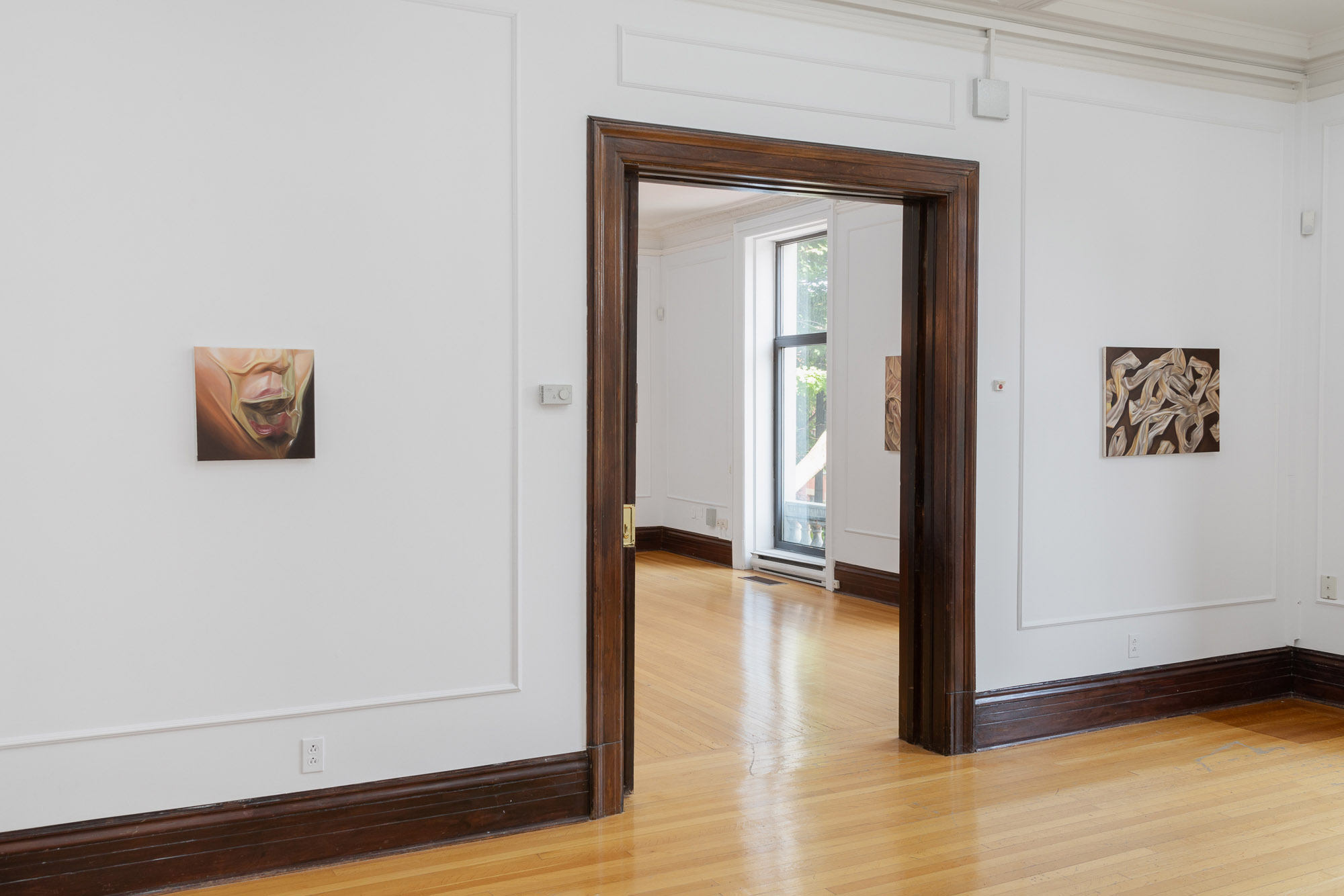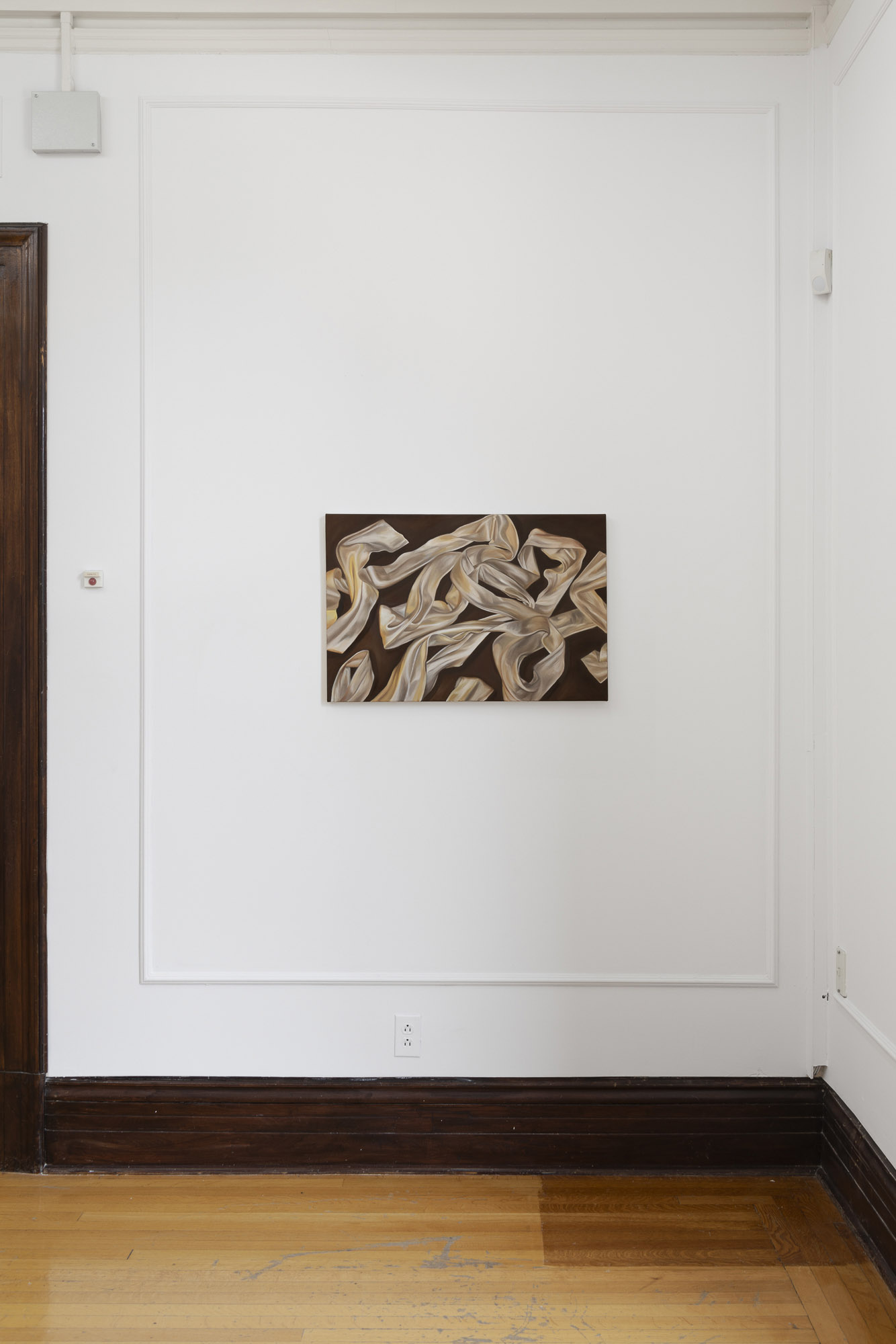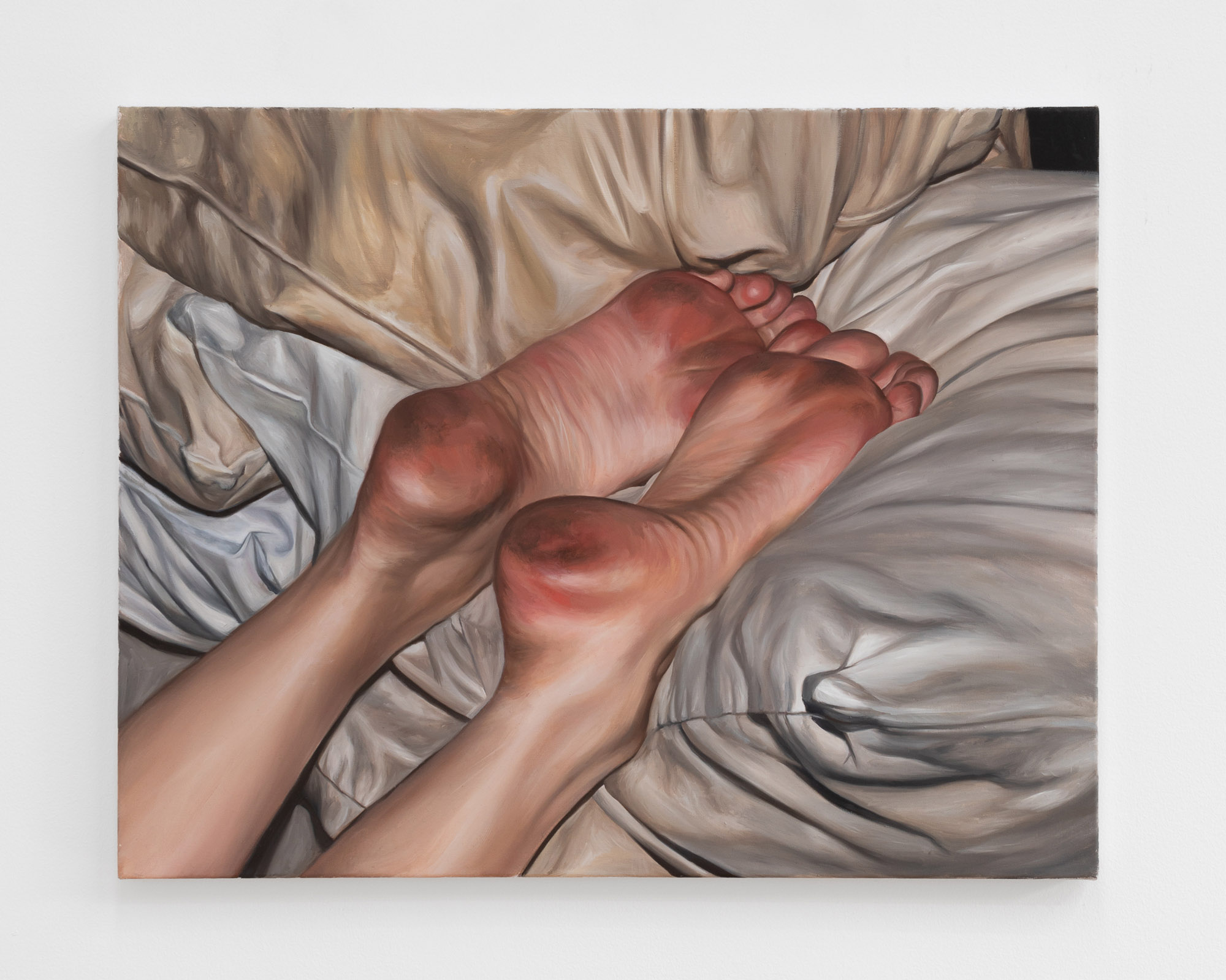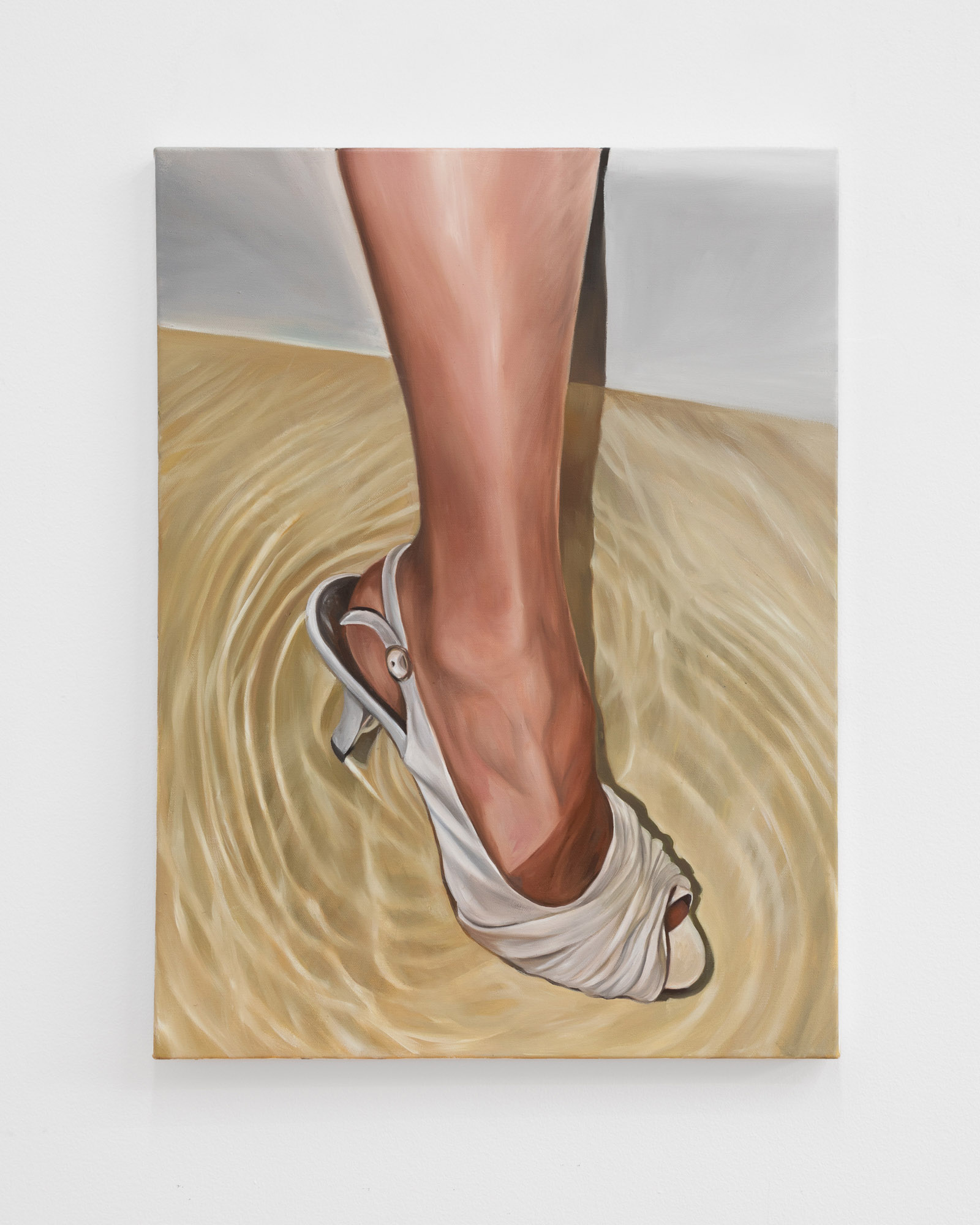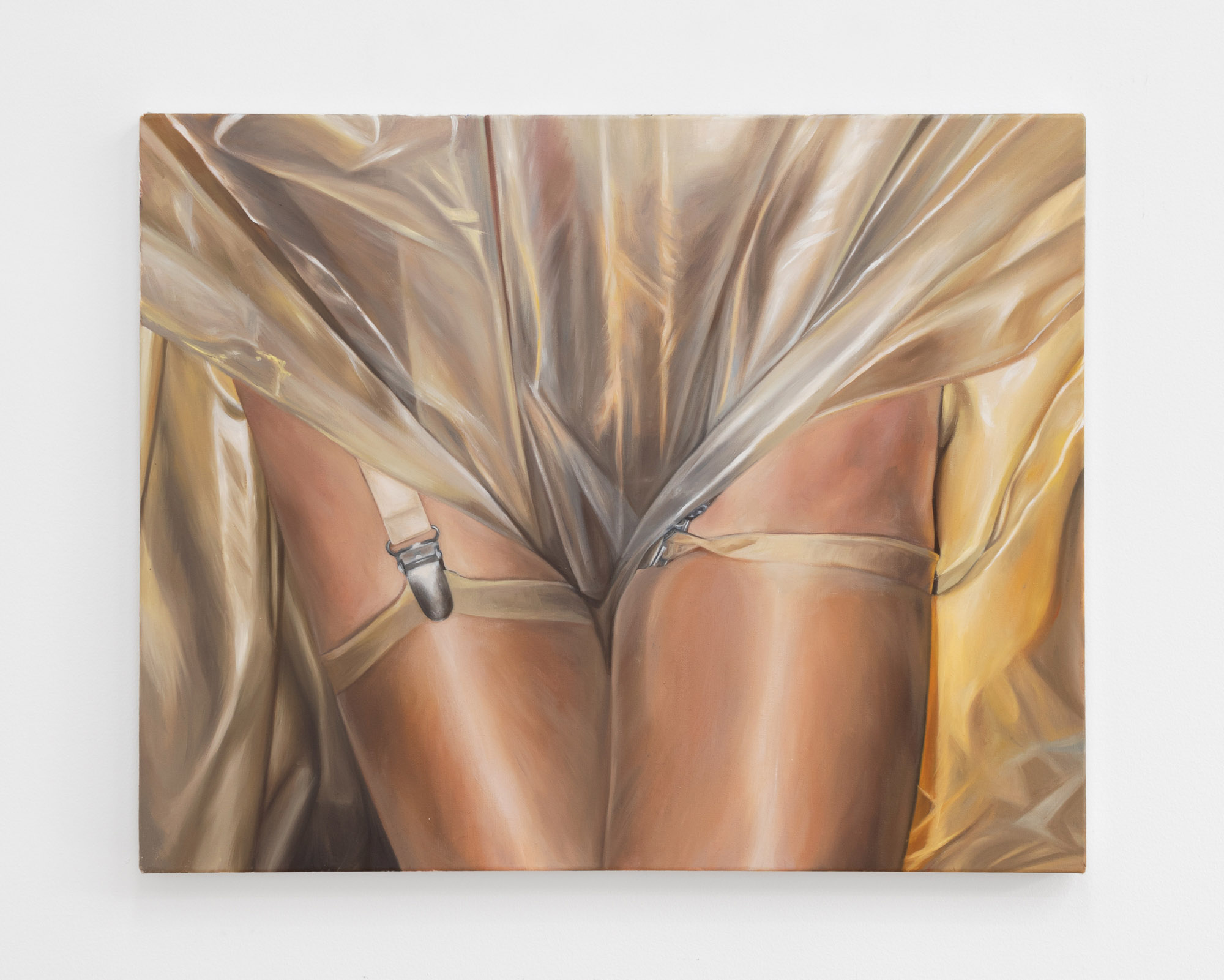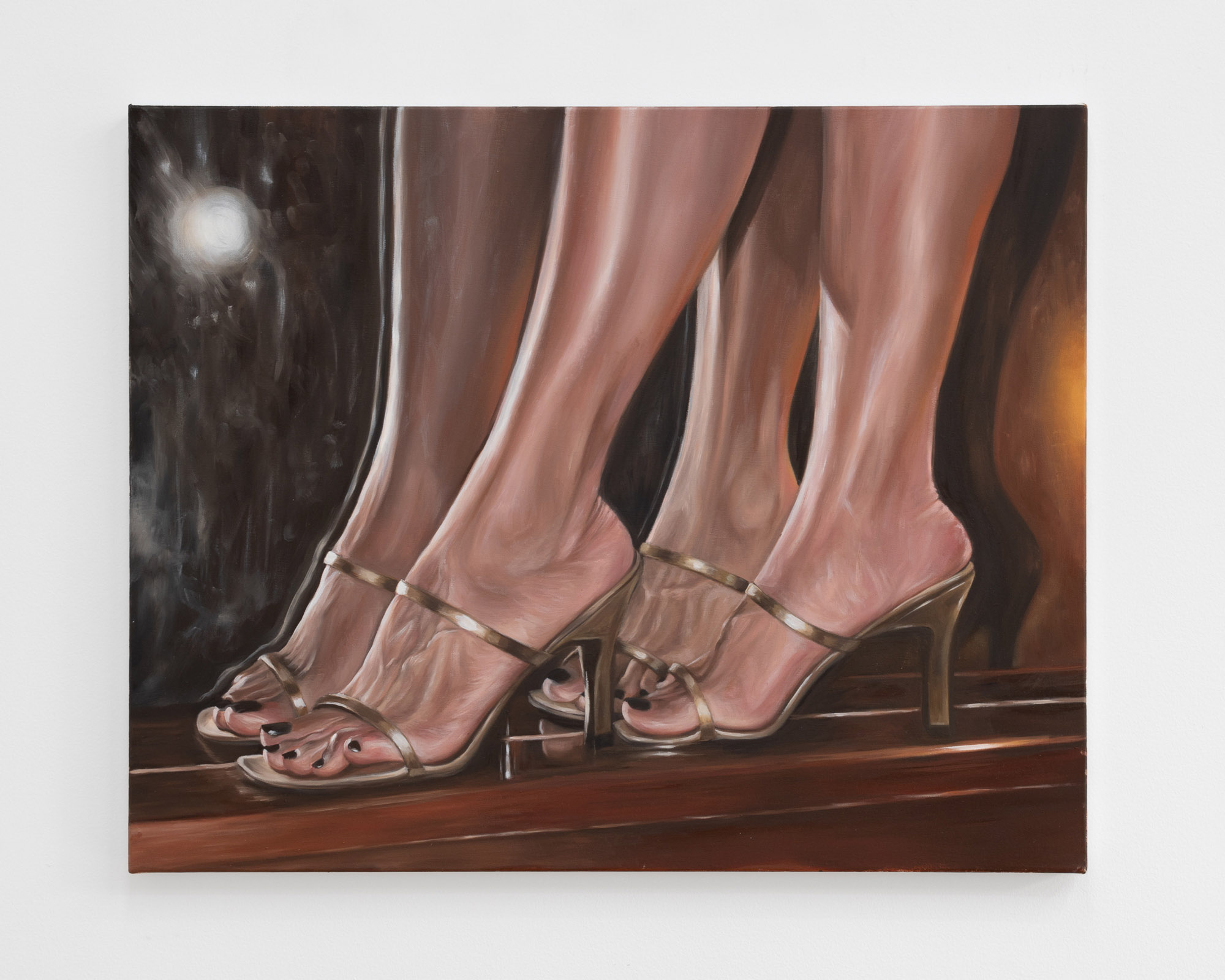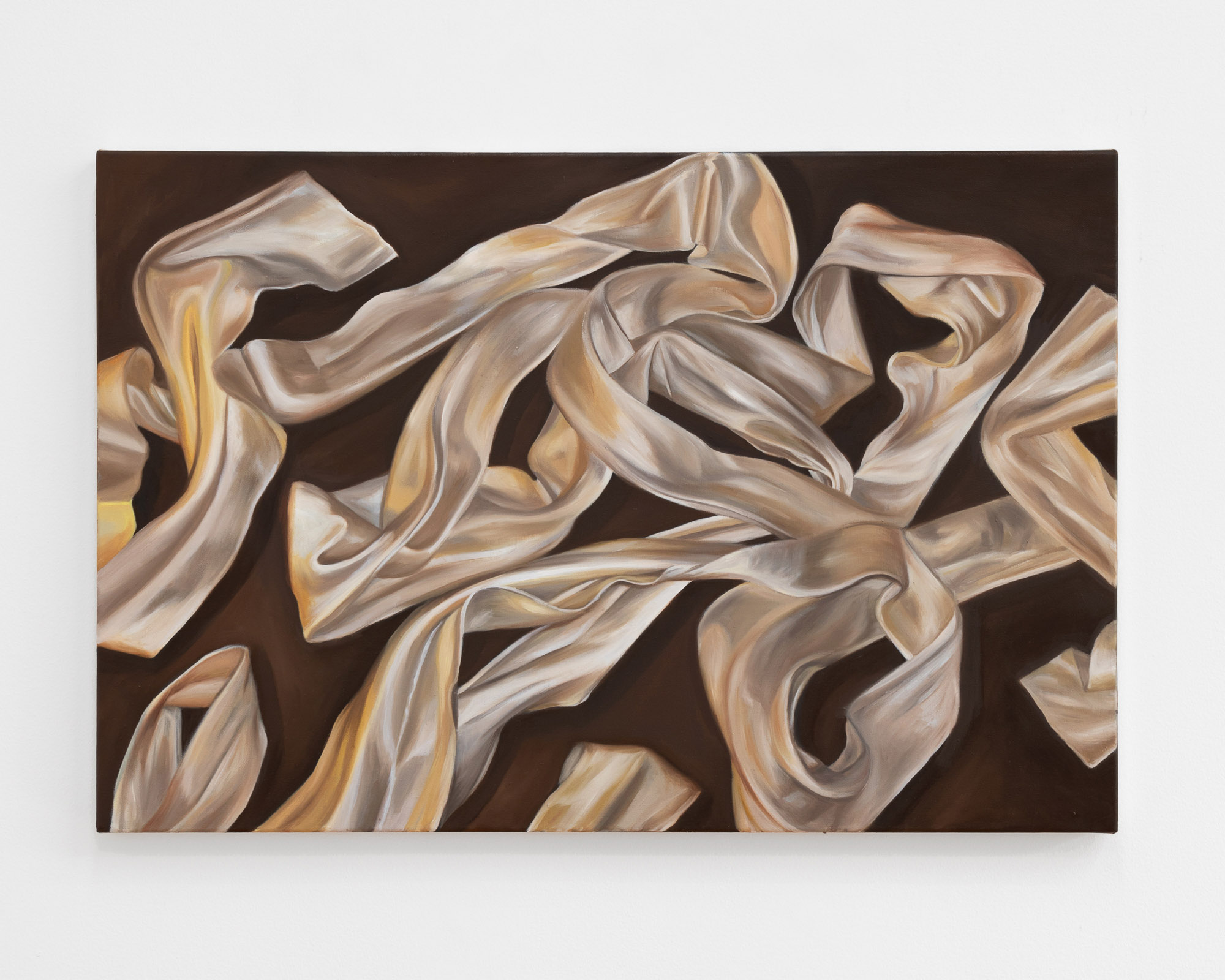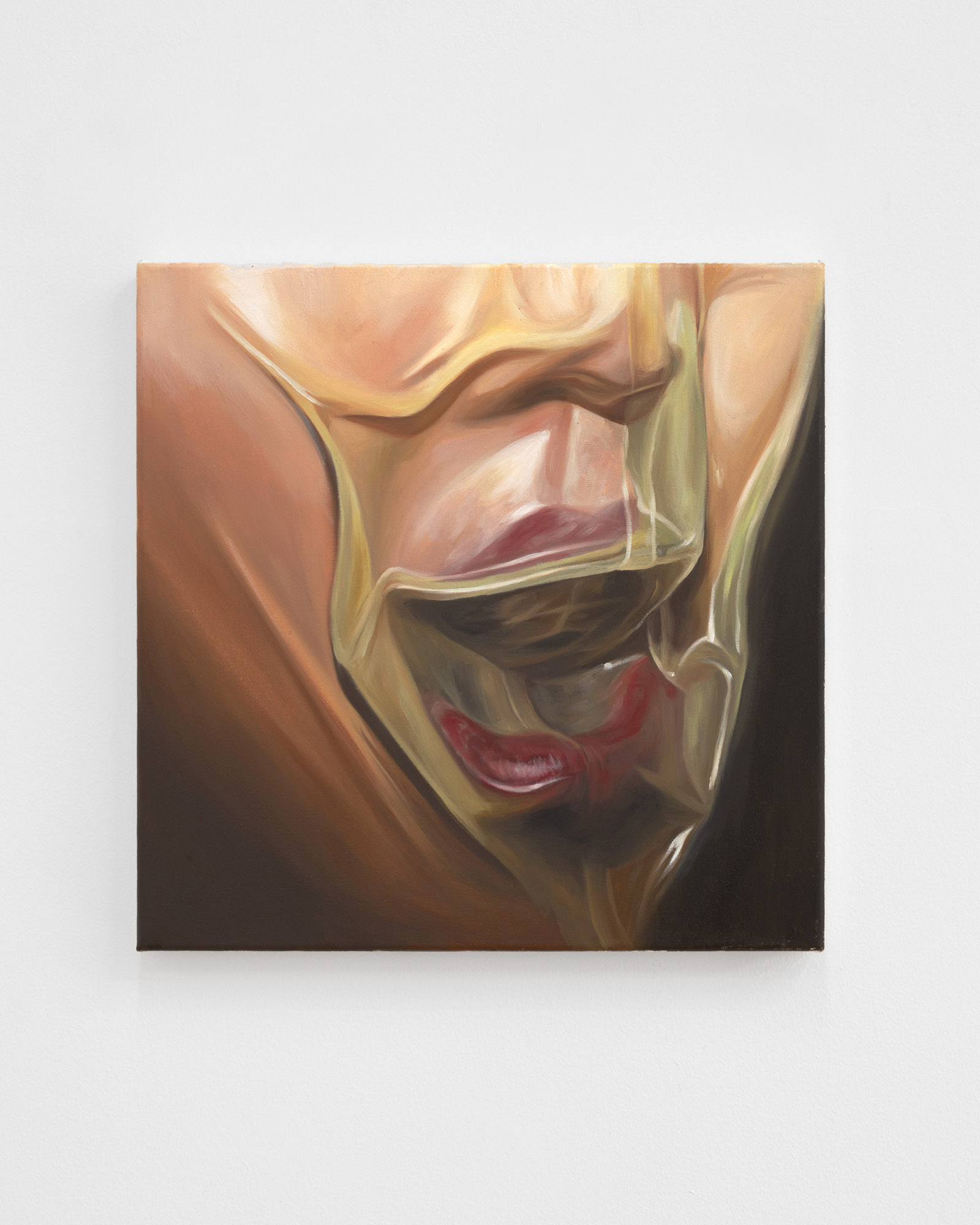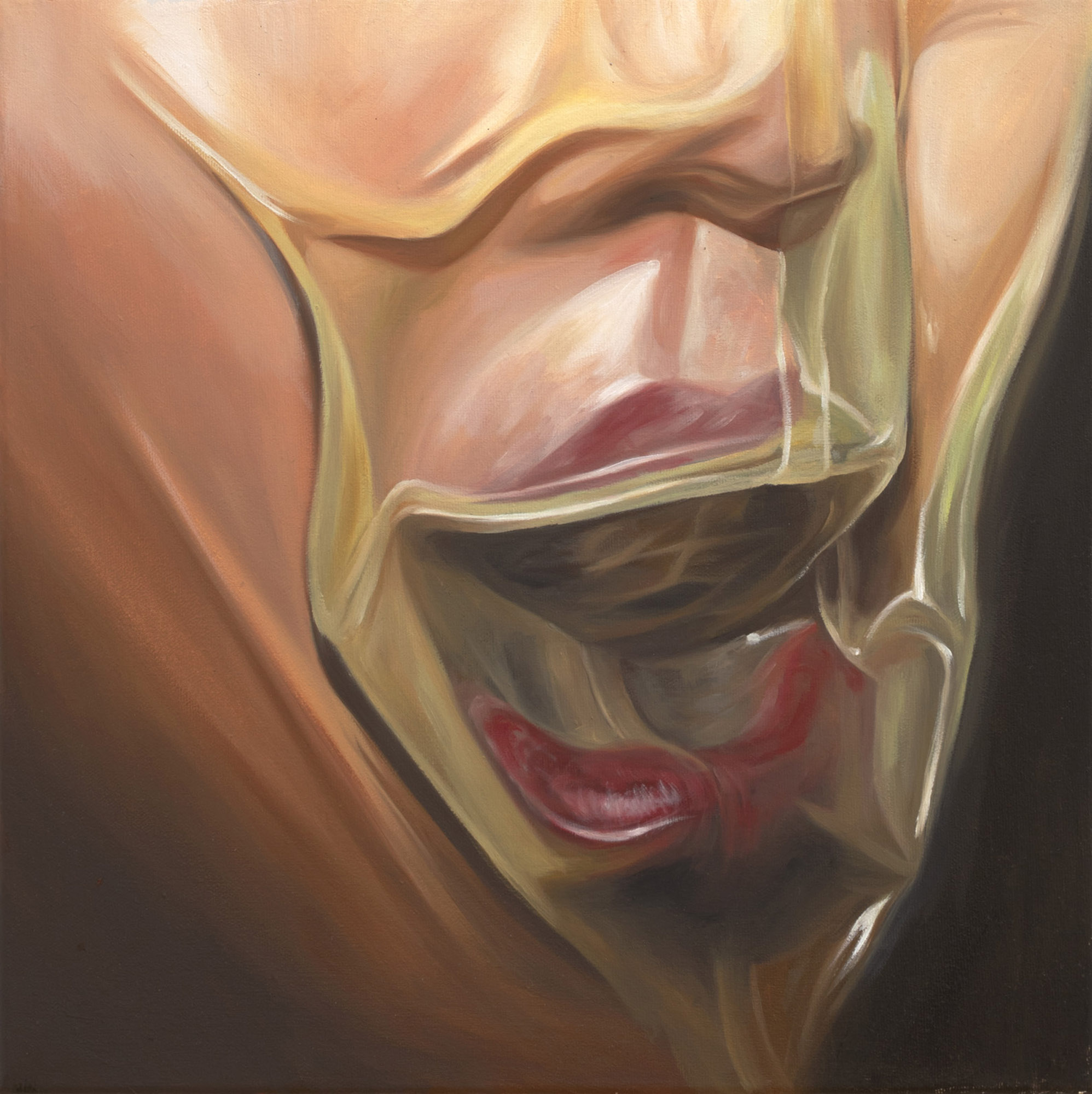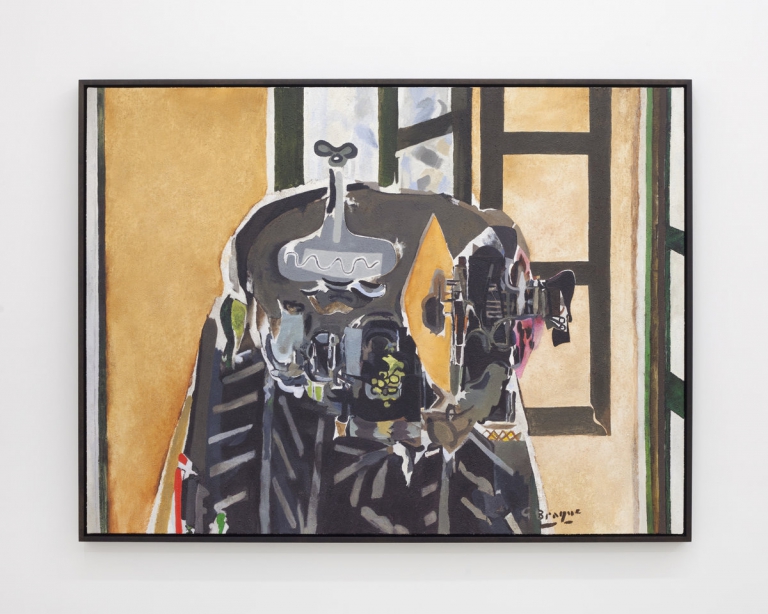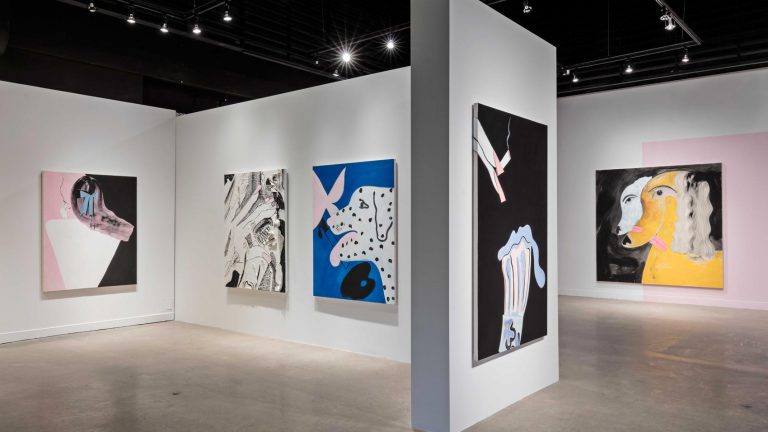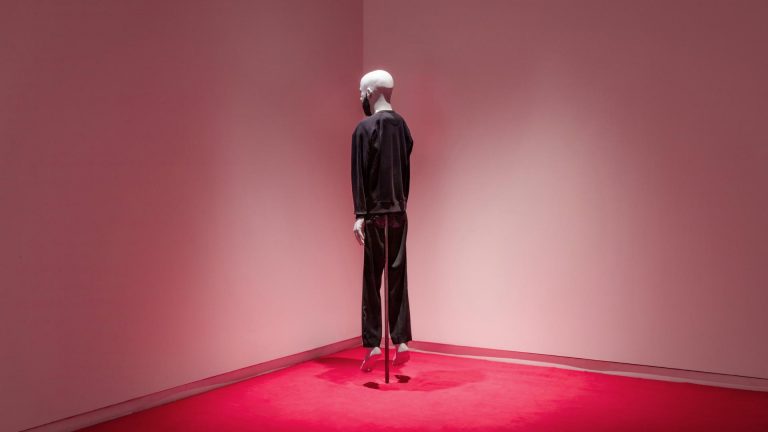Artist: Brittany Shepherd
Exhibition title: Phantasmata
Venue: Pangée, Montreal, Canada
Date: September 23 – November 4, 2023
Photography: all images copyright and courtesy of the artist and Pangée, Montreal
Sitting amidst the trees, halfway up Mont Royal’s incline, Brittany Shepherd temporarily occupies a space that amounts to her very own well-furnished treehouse. The city below glints and glimmers under the waning summer sun. As soon as night falls, the cascade of light from Montreal’s urban center sparkles along the riverside below. The Catholic undercurrents here present a piety that brushes against the city’s debaucherous edge. Between the countless religious destinations, there are sex shops, erotic theaters, and strip clubs without rules. Saint Laurent Boulevard and Sainte-Catherine street are hosts to dozens of such elicit venues, though they rest in the shadows of the holy spaces that line the mountain’s incline. Atop Mont Royal is Saint Joseph’s Oratory, a popular destination for pilgrimages. Down the road from Pangée is also a meeting place for members of Opus Dei, the noto- riously secretive religious organization, which subjects members to mortification procedures on their way to the oratory above. A burnt out church in the woods is rumored to play host to frequent ritual gatherings.
Taking note of her context, Shepherd effectively pursues these networks of frictional ideas and confrontations to build out a practice borne of direct experience and research-driven fervor.
Between the holy/unholy fractures, the murders and subsequent hauntings at Redpath Mansion, and the Allan Memorial Institute’s history of MK Ultra trials, Shepherd observes the traces left behind and implicates them within her work. Shepherd maintains, however, that she is not bound to one medium, but submits her perspective to an array of outlets, be it writing, cinema, or sculpture. The later formal mode is represented here in a new manifestation of her soap sculptures. This time around Shepherd has decorated these cast urethane objects with human hair, their forms matching those found in the haunted home of her grandmother.
The title of this exhibition, Phantasmata, understood as “hallucinations created by thought,” was coined by the multi-hyphenate Swiss thinker Paracelsus. In accordance, this show is upheld by notions of the specter, mental representations of an object, and disembodiment. All of these concepts culminate in the yellowish palette, marked by the antique and domestic. She demonstrates a cohesion of tones as shades of wood and candlelight brush against evocations of old latex, sun-worn skin, and murky bath water. These frictions between gross/sinister and warm/holy are consistent touchstones within Shepherd’s practice. The context, too, plays its role in administering a certain atmosphere. Pangée’s location is haunted by its history as home to a crazed heiress, whose presence is doubled by the remaining candelabras and burnt sienna tones that distinguish the gallery. In submitting these pertur- bations to a marked tenderness, Shepherd builds her own atmosphere from the one that she has inherited in the course of the residency.
Her paintings consistently revolve around the fetishistic, as Shepherd mines online search engines, probing them for content that is aligned with obscure erotics. In “Foul Perfection: Thoughts on Cari- cature,” Mike Kelley writes about sexual imagery and acts after their transition into the realm of taboo. He states that pornography “tends to be body-part specific,” its material “encapsulating the erotic entirety in the fragment.” Its artifacts are “cut out and isolated, and thus no less metaphoric: they become objectified stand-ins and irreal substitutes for themselves.” It is precisely because of their isolationism that “they gain the distance of the fetish.”
Shepherd traces this evolution of documented sex and its inherent subjugation as it yields a near complete “abstraction” of the aforementioned pornographic parts. The resulting pieces, however, ultimately “rise pleasurably back into consciousness in their new form,” per Kelley’s estimation. This also works in tandem with the conditions of a secret society – internal procedures, rites or rituals, and private space. Performance and intimacy are thus critical links between fetish communities and clan- destine organizations.
Within Shepherd’s practice, mundanity is transformed into sumptuous images of cropped heels and exposed garters. Silk and lace flow across canvases, too, their erotics motivated by decontextualizai- ton. A particular lust is inscribed within images of dirty feet and bound women, too, which Shepherd identifies and attunes her painterly gaze to. The disappearing contents that she extracts from the web are increasingly subject to algorithmic erasure, as tech is catching up with the subversive side of things. Satiety is ultimately kept at bay in Shepherd’s world, allowing desire to proliferate through a swell of considerate brushstrokes. One painting offers an unmounted La Tour candle, seen balancing between thighs and a mess of plastic wrap. Another image presents a white-heeled foot delicately balanced in a soiled bathtub. Shepherd induces these desirous compositions by constructing patterns from source material and lived experience. She also traces the contours of private and public spaces, whether literal or psychological.
– Text by Reilly Davidson




